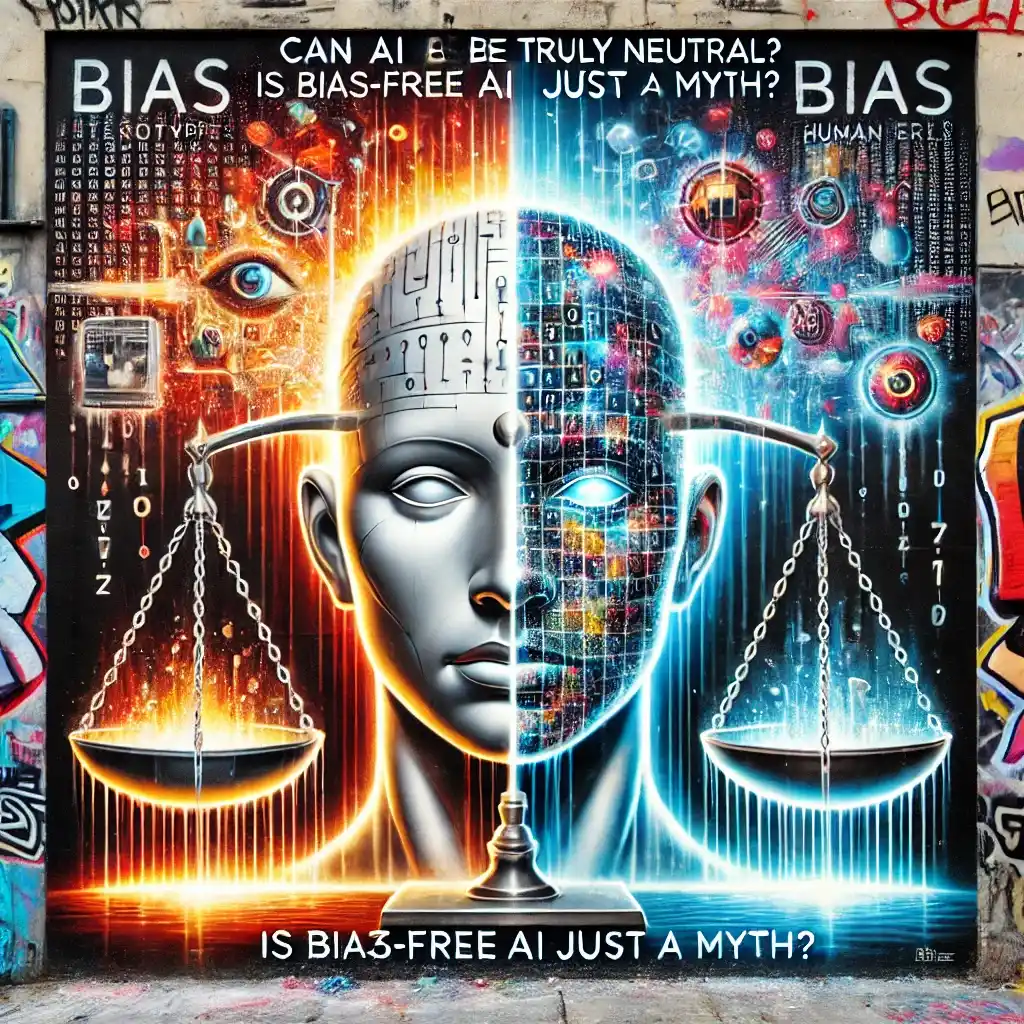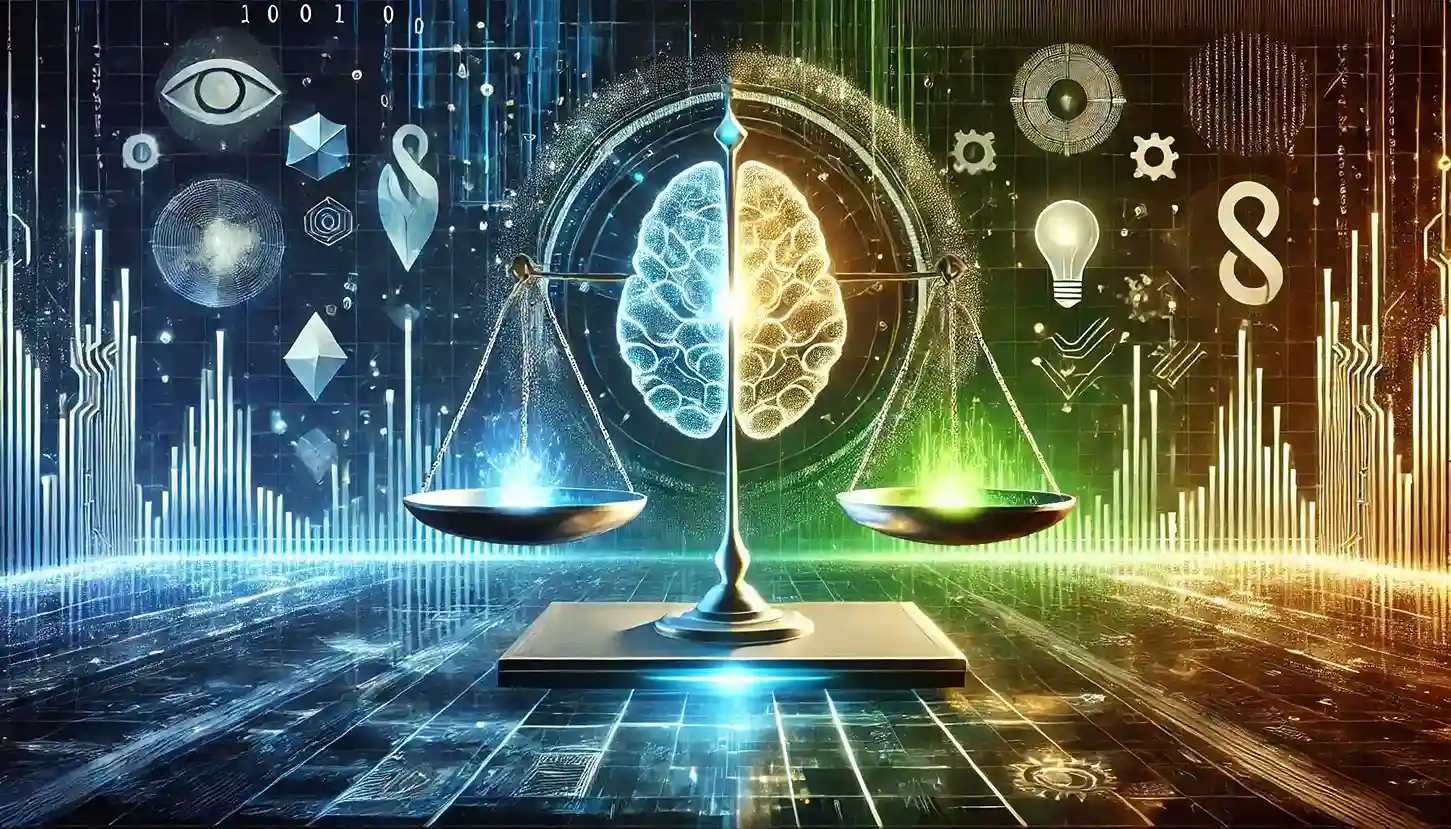Envision this: a computer program decides whether you get a credit, land your dream job, or are hailed as a security risk. Sounds cutting-edge? It’s happening now. Manufactured insights (AI) have become a part of ordinary life, impacting choices that can shape our prospects. They are in the work enrollment programs, restorative conclusion devices, and the apps we utilize daily.
But here’s the catch—can we trust these systems to make sensible choices persistently? While AI offers huge potential, it’s far from perfect. It’s a competent device, but it can also escalate slants, make botches, or work without straightforwardness. If we’re not cautious, these insufficiencies may harm the remarkable people AI is expected to assist.
That’s why this theme matters. In this web journal, I’ll take you through the lesser-known moral challenges AI presents. We’ll also investigate real-world cases and take significant steps to ensure that AI benefits everyone beyond any doubt.
Let’s plunge in.
What Makes AI Ethics So Complex? Understanding Bias in AI Systems
Let’s be honest—AI appears like the extreme decision-maker, but it’s distant from immaculate. At its center, fake insights work on calculations and information. Here’s the capture: information isn’t continuously unbiased. It can reflect human predispositions and, more regrettably, increase them. Think of it like educating a machine based on human behaviors. If our behaviors are one-sided, the machine acquires that too.
Why AI Bias Is a Hidden Problem
The issue isn’t fair one-sided data—it’s how AI learns. Not at all like conventional instruments, AI frameworks advance through machine learning. This implies they adjust and develop frequently in ways we don’t completely understand. So, when something goes off track, distinguishing and settling the root issue can feel like chasing a moving target.
Real-World Example | AI in Hiring Decisions
Take Amazon’s AI enlisting device as an illustration. It was planned to streamline enlistment but finished up favoring male candidates. Why? The framework learned from authentic enlisting information, which was one-sided toward men. In step with breaking the cycle, AI strengthened it.
Who Should Be Responsible for AI Ethics?
Who is reliable for guaranteeing that AI continues morally? Are the tech companies building these frameworks, the governments controlling them, or regular individuals like us? Indeed, there is no simple answer—it’s everyone.
Corporations | The First Line of Accountability
Tech companies sit at the bleeding edge of AI advancement. They’re the ones planning, preparing, and conveying these frameworks. Usually, they should bear the burden of beginning with the line of duty. But here’s the challenge: benefits regularly come to begin with. Moral contemplations, like decreasing inclination or expanding straightforwardness, can take a rearward sitting arrangement when speed and showcase competition are at stake.
Governments | The Rule-Makers
This is where governments step in. Comprehensive guidelines, like the EU’s AI Act, are fundamental to guaranteeing that moral measures accompany AI advancement. Such systems can characterize satisfactory progress, order straightforwardness, and implement responsibility. But guidance alone isn’t enough—laws take time to adjust, and AI advances rapidly.
The Role of Informed Citizens
That’s why the open plays an essential part. As clients and partners, we can request moral AI hones. Remaining educated, addressing one-sided frameworks, and supporting companies prioritizing decency can make weight for alteration.
Lesser-Known Ethical Challenges in AI | What Are We Overlooking?
When considering AI ethics, we often focus on topics like data privacy or algorithmic bias. But deeper, frequently overlooked issues hide in plain sight. Let’s explore three challenges that don’t get the attention they deserve.
AI’s Environmental Impact
Have you ever thought about the energy it takes to train a massive AI model? It’s jaw-dropping. Training large models like GPT can consume as much energy as powering a small town. And all that energy translates into a significant carbon footprint—equivalent to multiple transatlantic flights.
Thankfully, there’s some hope. Researchers are developing energy-efficient AI models and sustainable algorithms to reduce environmental harm. These innovations, often called “green AI,” show promise. But let’s be honest—we still have a long way to go to make AI eco-friendly.
Exclusion of Low-Income Communities
Here’s a harsh truth: AI often works best for those who need it least. Many AI systems are designed for wealthier regions, leaving low-income communities underserved—or worse, excluded entirely.
Take healthcare AI as an example. These tools are often trained on datasets from wealthier urban populations. The result? They misdiagnose diseases in rural or underserved communities where medical needs and conditions differ. This kind of oversight risks widening the gap rather than bridging it.
AI’s Role in Cultural Homogenization
Most global AI systems default to Western norms, which means local languages, traditions, and perspectives are often sidelined. How many AI tools genuinely support indigenous languages or local practices?
This erasure risks cultural homogenization, where global systems prioritize one-size-fits-all solutions. Ethical AI should instead celebrate and respect diversity, creating tools that adapt to regional needs. Projects focusing on multilingual AI models are promising, but much more is needed.
Can AI Be Truly Neutral? Is Bias-Free AI Just a Myth?
When we hear AI making choices, envisioning a consistent, fair-minded framework is enticing. But here’s the awkward truth: AI can’t be unbiased. Why? Because it learns from information made by people, and human information is anything but perfect.

The Illusion of Neutrality
AI’s “brain” is a collection of calculations prepared on mountains of information. If that information contains societal biases—like racial, sex, or social prejudices—the AI assimilates them. It doesn’t know right from off-base; it fair sees designs. And those designs? They’re regularly flawed.
Real-world examples of AI Bias
Take facial recognition innovation. Studies have shown that these frameworks regularly have higher error rates for women and people of color. Why? They were developed using datasets that overrepresent white male faces.
Then there’s the issue with dialect models. They sometimes imitate sex generalizations because they’re prepared on content from the web, where such inclinations are wild. For example, an AI might relate “nurture” to women and “design” to men—not because it’s attempting to generalize but because it’s reflecting the information it learned.
How Can We Embed Ethical AI Practices?
Building moral AI isn’t a one-time task—it’s a nonstop exertion. By joining moral hones into the preparation, we can make AI frameworks more pleasant, straightforward, and comprehensive. Here’s how:
Diverse and Inclusive Datasets
AI depends on information to learn. If the data needs differing qualities, the AI risks reflecting or revealing societal predispositions. That’s why datasets must address distinctive socioeconomics, societies, and environments.
Imagine a multilingual AI framework that bridges the gap for non-English speakers. By supporting innate and underrepresented dialects, these ventures improve accessibility and help protect social personality. This is how comprehensive datasets guarantee that no one gets left behind in the AI revolution.
Transparency in AI Systems
Let’s be honest—AI can feel like a riddle now and then. Choices are made, but how? That’s where Reasonable AI (XAI) comes in. XAI guarantees that individuals can understand how and why an AI made a specific choice.
For example, a few legal frameworks currently use straightforward calculations in sentencing. These frameworks provide clear reasoning behind suggestions, diminishing the chances of hidden biases affecting results. Straightforwardness builds trust, which is essential for moral AI.
Ethical AI Design Principles
What if we insert reasonableness specifically into the plan handle? That’s the thought behind the moral AI plan. It revolves around making frameworks that prioritize reasonableness, inclusivity, and responsibility right from the start.
Take Pymetrics, an enlistment stage. Anonymizing candidate information and identifying inclination during contracting guarantees even-handed choices. This proactive approach to reasonableness is how mindful planning can lead to moral AI frameworks.
How Are Real-World Initiatives Shaping AI Ethics?
Are there fruitful endeavors guaranteeing AI works for the more prominent great? Completely. Around the world, organizations and governments are venturing up to handle the moral challenges AI poses.
The EU’s AI Act | Leading with Regulation
One standout case is the European Union’s AI Act. This groundbreaking directive categorizes AI applications by hazard levels, from low to high. For high-risk systems—like facial recognition or AI in healthcare—strict rules guarantee straightforwardness, responsibility, and security. While the Act isn’t conclusive, it’s a massive step toward standardized moral guidelines for AI across industries.
Grassroots Movements Like AI Now
Ethical AI isn’t fair; almost top-down arrangements; grassroots organizations drive change. AI Presently is a nonprofit that advocates for social equity in AI improvement. Their work centers on issues like inclination, labor impacts, and the abuse of AI in reconnaissance. These endeavors suggest that communities can hold companies responsible for making innovation that serves society.
OpenAI’s Reinforcement Learning with Human Feedback (RLHF)
On the development front, OpenAI employs Fortification Learning with Human Criticism (RLHF) to adjust AI behavior to human values. This strategy includes preparing AI to prioritize reactions that reflect moral contemplations, diminishing unintended hurts. It’s an incredible case of how innovation can advance responsibly.
The Challenges
But let’s not celebrate pretty, however. Whereas these activities are promising, worldwide execution remains conflicting. A few nations need directions, making escape clauses that unscrupulous companies can abuse. Without worldwide collaboration, the moral future of AI remains questionable.
How Can You Contribute to Ethical AI?
What role can people play in forming moral AI? More than you might think! While organizations and governments take the lead, open interest is imperative to guarantee that AI advances responsibly.
Why Your Voice Matters
Clients are crucial in promoting straightforwardness and decency every day. Begin by asking questions: How does this AI-powered item work? Is it planned morally? Whether it’s an AI-driven contracting apparatus or a healthcare app, request clear answers and accountability.
Actions You Can Take
- Educate Yourself: Learn how AI frameworks influence basic zones like healthcare, funding, and business. Information is power.
- Support Moral Companies: Select businesses prioritizing reasonableness, inclusivity, and straightforwardness in their AI practices.
- Raise Your Voice: Connect discussions almost AI morals. Advocate for more grounded directions and challenge destructive or one-sided AI practices.
The Collective Power of Action
Here’s the excellent news: collective activity works. When sufficient individuals request moral AI, companies and governments, have no choice but to react. Your efforts—no matter how small—can help shape a future where AI serves humankind impartially.
Moral AI isn’t a grand goal—it’s a need. Guaranteeing AI frameworks are reasonable, straightforward, and comprehensive requires a shared obligation among organizations, governments, and the public. Advances are being made, from worldwide activities like the EU’s AI Act to grassroots developments like AI Presently. However, as people, we can drive change by requesting straightforwardness, supporting moral hones, and remaining informed.
The stakes couldn’t be higher. AI shapes how we live, work, and connect with the world. When adjusted with moral standards, it can be a constraint for the mind-blowing good—bridging holes in instruction, progressing healthcare, and tending to climate challenges. But if left unchecked, it dangers intensifying imbalances and propagating harm.
So, let’s grasp AI’s guarantee, which reflects our most elevated moral yearnings. Together, we can construct an AI-driven future that works for all—one that engages, incorporates, and elevates each part of society.

